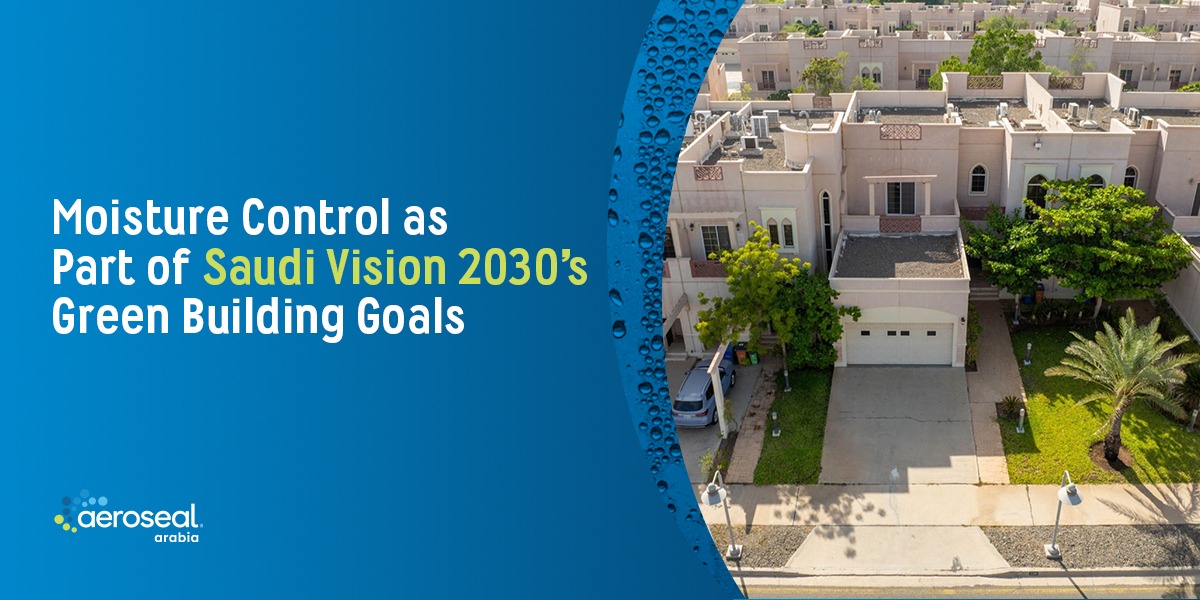
Moisture Control as Part of Saudi Vision 2030’s Green Building Goals
Saudi Arabia’s Vision 2030 places sustainability at the heart of its economic and development agenda. One of the most important areas of focus is the building and construction sector, where energy efficiency, indoor air quality, and long-term durability are seen as essential to creating greener communities. While most conversations around green building center on renewable energy and smart technologies, there is another critical factor that cannot be ignored: moisture control.
Moisture is one of the most common but often overlooked threats to building performance. When not managed properly, it causes mold growth, structural deterioration, poor indoor air quality, and increased energy costs. In a country with diverse climates ranging from the humid coastal cities to the dry but fluctuating conditions of the inland regions, effective moisture control is not just a technical requirement. It is a necessity for achieving Vision 2030’s ambitious green building goals.
The Challenge of Moisture in Saudi Arabia
Different parts of the Kingdom face unique challenges. Coastal cities such as Jeddah and Dammam deal with constant humidity and salty air, which increase the risk of corrosion and condensation. Inland cities like Riyadh experience sharp temperature differences between day and night, which often lead to hidden condensation inside walls and ductwork. Areas exposed to frequent dust storms also face the problem of dust combining with moisture, creating an ideal environment for microbial growth.
If moisture problems are not addressed at the design and construction stage, buildings face faster material degradation, inefficient HVAC performance, poor air quality, higher maintenance costs, and even non-compliance with new building codes. For mega projects such as NEOM and the Red Sea Project, these risks could translate into enormous financial and environmental costs in the long run.
Moisture Control and Green Building Standards
Effective moisture control is a requirement across many global and regional standards. The Saudi Building Code increasingly references international benchmarks such as ASHRAE and SMACNA, both of which emphasize moisture prevention and airtight construction. LEED and Estidama rating systems also recognize moisture management as an essential part of indoor environmental quality.
By ensuring proper control of air leakage, duct sealing, and humidity levels, developers in Saudi Arabia can not only meet local regulatory requirements but also position their projects to achieve international certification. This is directly aligned with Vision 2030’s drive to make the Kingdom a leader in sustainable construction and urban development.
Practical Strategies for Moisture Control
Contractors and developers can integrate a number of effective strategies into their projects to meet both performance and compliance goals.
Building Envelope Integrity
A tightly sealed building envelope prevents warm outdoor air from infiltrating indoor spaces. This reduces condensation risks and supports stable humidity control.
Advanced Duct Sealing
Leaky ducts are one of the most common causes of uncontrolled moisture. Aeroseal’s duct sealing technology provides a proven solution by sealing leaks from the inside. This not only reduces energy loss but also prevents humid air from entering the system, which helps maintain consistent indoor conditions and supports compliance with Saudi energy codes.
Moisture Resistant Materials
Using the right materials, including vapor barriers, closed cell insulation, and water resistant drywall, protects walls and ceilings from condensation damage.
Optimized HVAC Design
HVAC systems in Saudi Arabia need to do more than provide cooling. They must also be designed for effective dehumidification. Smart controls, proper air balance, and regular maintenance all play a role in long-term moisture management.
Continuous Monitoring
Green buildings are expected to perform consistently over time. Monitoring systems that track humidity levels and air quality help facility managers detect and resolve issues before they become costly problems.
Aeroseal and Vision 2030
Aeroseal’s duct sealing technology is a practical and effective way to support the Kingdom’s green building transformation. By addressing one of the hidden but significant causes of energy waste and moisture problems, Aeroseal helps improve efficiency, reduce operational costs, and create healthier indoor environments. These outcomes directly support the sustainability principles of Vision 2030.
Moisture control is not just about avoiding damage or reducing repair bills. It is a central component of building resilience and occupant well-being. As Saudi Arabia continues to invest in ambitious projects, integrating advanced moisture control strategies will ensure that its new generation of buildings meets the highest global standards and remains efficient and durable for decades to come.



